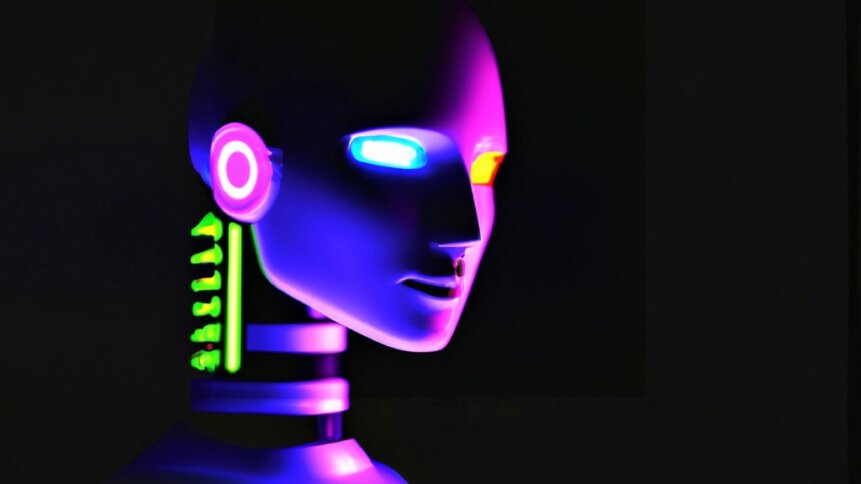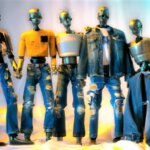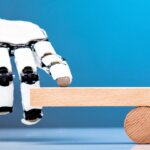Digital AI skills provide lessons on how to build better robots

Artificial intelligence (AI) has leapt into the limelight thanks to the rise of generative AI and large language models (LLMs) powering text-based image creation and advanced chatbots such as ChatGPT. But that’s by no means the last of the statistical wizardry enabled through deep learning and other machine learning methods. Digital AI skills will impact our physical world as those automation lessons inspire developers to build better robots.
AI is providing vast automation opportunities in the digital domain and is busy reshaping the labor market. “AI has cut positions, broken the bottleneck of human efficiency, reduced standardized and repetitive work, changed the nature of work and enhanced work efficiency,” wrote David He and Venessa Guo of the Boston Consulting Group in a report commissioned by the World Economic Forum. And those conclusions were drawn in 2018, four years before OpenAI had released ChatGPT and teamed up with Microsoft.
Despite all of the analysis, the impact on jobs brought about by digital AI skills can still be hard to foresee. Today, few people would be surprised to learn that automation has radically changed the nature of mechanical work. But to discover that makeup artists and law professionals – to give just a couple of examples – could find themselves being displaced by generative AI tools is certainly more of a shock.
We are just beginning to experience the impact of AI on knowledge work as digital skills are becoming adopted more widely to automate all kinds of tasks, such as content generation for websites and article translation. And someone that understands the positive impact of AI on businesses is Jonas Angleflod, CEO of Stockholm-based Theories Group, a scale-up accelerator for internet ventures.
Crossover algorithms and how to build better robots
What makes Angleflod interesting too, is that he is a self-confessed robot nerd, and he points to a number of ways in which digital AI skills provide lessons on how to build better robots. Theories Group helps online firms to monetize content in different ways – for example, by developing comparison websites, identifying topics with strong user intent, syndicating content, and translating it for local markets.
“We use a lot of AI tools ourselves,” he told TechHQ. “There’s a wheel, a process flow that’s happening.” Today, investing in automation in the digital domain means investing in AI – for example, to build tools that can spin out content in different versions. But the human creative spark remains. It’s just augmented and data-driven so that websites can run with less manual intervention.
Witnessing the impact of AI on digital tasks has got Angleflod thinking about how algorithms will cross over and augment our lives in the physical world in sectors such as healthcare, schooling, and emergency services. As knowledge of how to build better robots grows, AI could enter new verticals and help workers by performing dangerous tasks and eliminating tedious or repetitive work.
It’s an interesting thought exercise to consider what would happen when AI takes a physical form. Early success stories are relatively simple devices such as robot vacuum cleaners and autonomous lawnmowers, which – at scale – free up a large amount of time for humans to pursue more interesting endeavors. In a hospital setting, cleaning robots could perform sanitation tasks and help to prepare rooms for patients.
Fine-tuned biological machines
Building robots to carry out more complex tasks soon gets much more difficult and expensive. “Fifteen years ago, the problem was batteries,” said Angleflod. “But now it’s shifted towards energy efficiency.” Computers remain power-hungry in comparison to the human brain, which – although it contains some of the hungriest cells in the human body – still gets by with the energy input of a dim lightbulb.
“Nature has fine-tuned what a biological machine needs, but we’re still using motors and actuators that are not energy efficient and sensor efficient,” he points out. It’s still early days in finding ways to mimic skin and muscles and understanding how to build better robots that can navigate new surroundings and not bump into things – for human safety, as people are likely to be more fragile than future machines.
READ NEXT

Will AI take our jobs? Yes and…
“Small robot augmentation is a sensible first step,” said Angleflod. “We think that cobots are the first generation.” Collaborative robots (cobots) designed to work in spaces shared with humans have become an automation success story in manufacturing. They can be programmed to perform assembly, dispensing, finishing, quality inspection, and a whole host of other production tasks.
Just considering palletization (the process of stacking, loading, and securing high quantities of goods onto a pallet for storage and transportation) highlights how big an impact AI could have in the physical world. There are estimated to be two billion pallets in service worldwide, and loading and unloading them is a pain.
“Traditionally, palletization has been a manual operation – and in many cases it still is – we estimate that 250,000 people are employed in this type of work worldwide,” explains Irving Paz Chagoya of Universal Robots. “Manual palletizing requires these workers to perform the same strenuous task over and over again. Workers bend, lift and twist for hours on end, which can cause long term musculoskeletal damage.”
Digital AI skills and supporting new careers
Leveraging the power of AI and robotics will eliminate jobs, but if workers have the opportunity to upskill and build new careers then it doesn’t have to lead to unemployment. However, it could take time for things to stabilize based on how quickly ChatGPT – which was only released in November 2022 – has caused knowledge work to wobble as enterprises race to integrate LLMs into their operations.
Automating the physical world at a similar pace would have dramatic consequences, but – for now – there are too many hurdles still to overcome. And it’s possible that some lessons would have been learned from the application of AI skills in the digital domain, but relying on humans having learned lessons carries its own risk.
A future rich in cobots could be good news for device makers such as Apple and other computing firms who are profiting from digital applications of AI that make current products more attractive to consumers. But to succeed, incumbents would need to manage to transition their digital AI skills into the physical domain.
It’s possible that the added complexity of building robots could see new tech giants arise. Today’s robotics companies are often highly specialized and have been built up through large investments. And creating a general AI robot could be a task that’s beyond any individual firm, providing opportunities for multiple contributors and setting the scene for an industry that could look more like the automotive sector with OEMs and tiers of suppliers.








